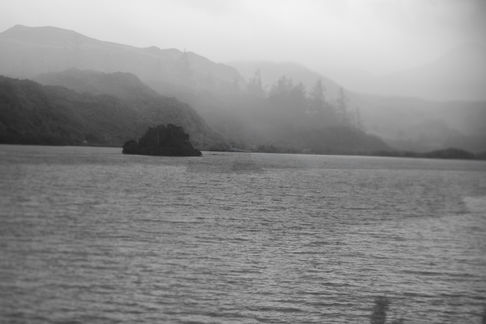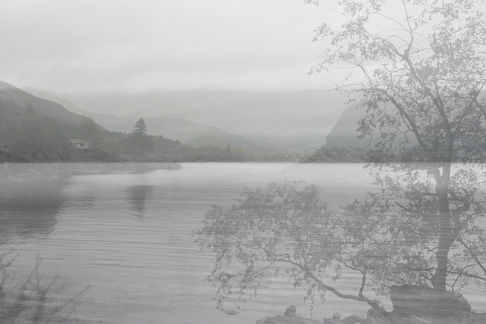
Sarah MacDonald
Sadly, I was still at the Lake District during this session, and although I tried to listen through Zoom, it just ended up being a garbled mess due to having some internet issues.
I knew that the group was going on a silent walk, which involved walking around Greenwich, observing their surroundings, and disconnecting.
I decided to do my own silent walk from Bromley to Chiselhurst. This is a walk I had done on a number of previous occasions, never with the purpose of distinct observation or for any other reason except getting from A to B. I chose this walk as it takes me from a busy city-esque town on the outskirt of London, to a slightly more rural space on the Kentish border. I wanted to observe and explore the difference between town and country, calm and chaotic, etc.
As I walked, I mainly noticed sounds. The constant squelch of tires on. the wet surface. The low roar of airplanes ascending, or otherwise. The hum of the intersection. The birds, I couldn't hear. Muddied by the louder, low fidelity sounds. I could see them, and imagine their noises, but I couldn't hear them. I tried to apply the cocktail party effect, but their song was still masked by other noises. I don't know why I cared about the birds or being able to hear them. I just did.
I carried on walking.
The farther I got from Bromley, the more occasional the cars had become. This gradual drop in frequency meant that the frequencies within which the birds frequented could be heard.
I turned on to an unmade road. The gravel moved with each footstep, grinding underfoot. So much litter. Napkins, random scraps of paper, a cup from a famous fast-food restaurant, a single plimsole, and a baby's dummy were all I could see before being distracted by a strong gust of wind. I turned around to check how far I had walked.
I noticed the cold air in my lungs. A welcome sensation after walking up a relatively steep path. That feeling made me want a cigarette. I stopped, pulled one out of the small paperboard packet, brought it to my lips, and lit it. I felt the nicotine rush spread through my body and I let out a sigh of satisfaction.
The rest of my walk appeared to be fairly mundane as I crunched my way up the road. The noise of the gravel followed me. The birds in the trees briefly quietened as I dodged a puddle, almost as if they were holding their breaths in anticipation of me slipping and falling into the muddy water.
This is a terrible road to drive on. I'm glad I walked.
As I couldn't be party to the session, I decided to do my own research on Sarah Macdonald. On her website (sarahmacdonald.net), she immediately writes about her usage of space and layering.
"My paintings explore the depiction of space and examine acts of looking. I layer patterns and surfaces to build up compositions. I want to invite the viewer to consider the status of form and space through my paintings. Breaking down the hierarchy of objects and surfaces allows me to examine the contours and the edges of familiar and misremembered spaces."
With layering and space in mind, I decided to experiment, and combine my photos of the Lake District on top of one another to explore the different layers that are created. Each of the images below features the same 12 photos in the same order. Each photo has an opacity of 50%. The only technical difference between each image is the blending method used (ie, Lighten, Overlay, Hard Light etc (see image)).

Layering these photos created a mixture of perspectives that, in turn, created a new landscape. Some of them turned out very similar in terms of which layers where most visible, so I will look to expand on these images with a short video.
As I am using images that compose a landscape that doesn't quite exist in the real world, I envisioned a soundscape to compliment it. I drew, once more, from Michel Chion's ideas of post-synchronicity and synchresis between sound and image.
"A point of synchronization, or synch point, is a salient moment of an audiovisual sequence during which a sound event and a visual event meet in synchrony." Chion, M; Audio-Vision, 1990
I played with the idea of delay between sound and image, so creating a thunderstrike image really stood out as you often see the action before hearing its corresponding sound. So, even though the sound and image are not strictly in sync, they adhere to the natural desynchronisation of light and sound over large distances.














